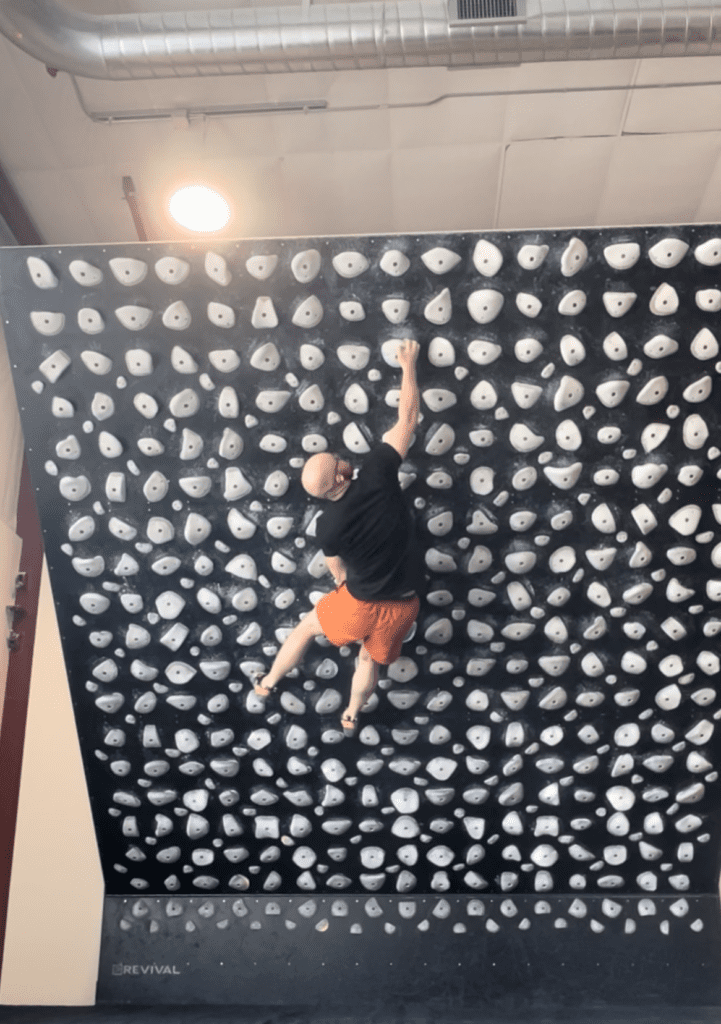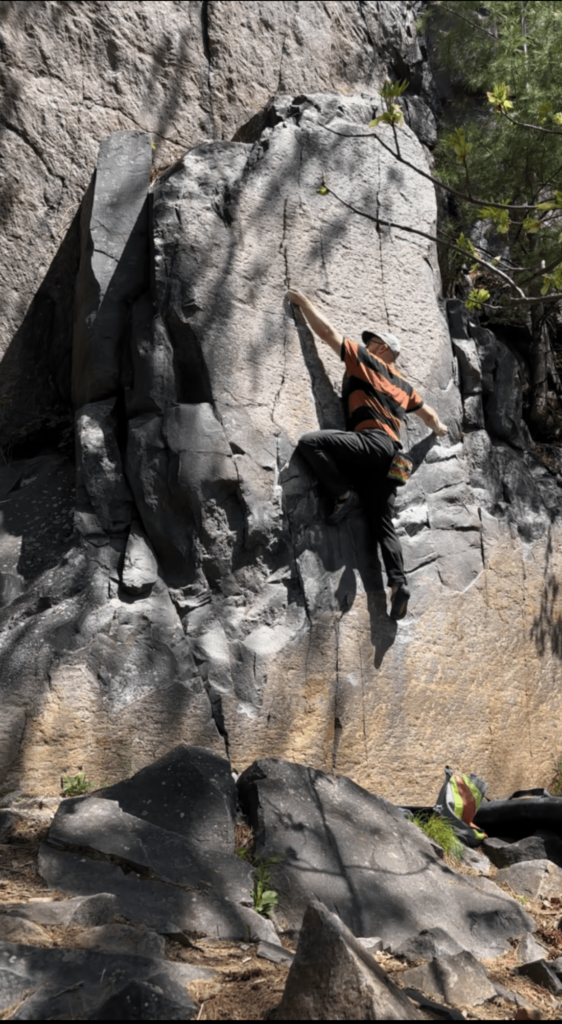There is much to be said about climbing as a pursuit and hobby. There is much joy to be found in the progression and learning to be found within it, as well as the community and great places it leads people. However, did you ever think that climbing is a fitness tool?
Let’s take a step back. Climbing is an inherently physical activity. You are using energy in large quantities and recovering from it as such. This isn’t anything new, climbing is a sport in the Olympics after all, but what does it offer as your workout compared to other forms of exercise, such as lifting, running, etc? Climbing is a fitness tool. It offers you an efficient, functional, full-body workout with a social and mental experience wrapped up in a fun activity.
Climbing is extremely functional. To me, functional workouts create changes in the body that are beneficial to everyday and long-term health. This includes but is not limited to balance, posterior chain activation, mobility in the body, grip strength, and core stability. Climbing touches on all of these.

Balance
Balance is essential in slab and vertical climbing as you learn to precisely move and maneuver your body to ascend. Balancing is key to many activities in life and helps you age well with less chance of falls or injuries.
Posterior Chain
The use of the posterior chain and core is key to human function. Both enable you to move and lift everyday objects or heavier ones, such as when moving. They also promote joint health in the legs by offering stability and a foundation in most movements. The strength from these muscle groups is great to have when shoveling, moving boxes or furniture, jumping, or even throwing something.
Mobility
Mobility is great in everyday life to enable you to move how you please without fear of strains or instability. It is also good for injury prevention when playing sports or other strenuous everyday activities, such as gardening or shoveling.
Climbing is a fitness tool
Climbing is a great way to strengthen the body as a whole. Of course the arms and hands play a front and center role in climbing but large groups of muscles such as the posterior chain which includes the glutes, lower back, and hamstrings (all essential muscles to everyday movement), the core as mentioned but also the shoulder complex, and legs are essential in climbing and are all used and trained.

These adaptations are great for strength through these muscles, but also mobility and stability, as climbing challenges your body in unstable positions. All terrain, from caves to vertical walls, will use almost your whole body in different ways and loads. Slab climbing will particularly aid in core, balance, and leg strength while still training the upper body. Overhung climbing strengthens your core from your abs to your posterior chain to ensure your feet stay on the wall and, of course, will work out the upper back and shoulders.
What has climbing done for my fitness?
Climbing almost solely has enabled me to maintain or even improve lifts I don’t touch for weeks. It strengthens and maintains your muscles throughout the body. This makes it efficient as your fitness routine and saves you time and planning in your week, which in turn gives flexibility to your life and training. One climbing session can sufficiently train most of the body.
Of course, training for climbing is a different commitment and path, but climbing for training or working out can be very flexible and also very social if that’s what one wants. Climbing is great with friends and also meeting new people. Sharing beta or information like sequences on climbs is a great way to meet people, and you and a friend can have a great time climbing the same or different things at the same time.
Climbing, like yoga, lifting, or calisthenics, offers a fun and progressive path to fitness. It will also always challenge you in new ways, keeping you engaged and interested. Climbing will also give you a space for creativity and fun while working out your whole body. Climbing is a fitness tool. Come give it a try if you haven’t already here at Summit!


